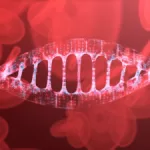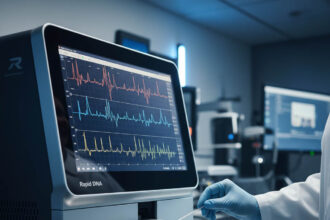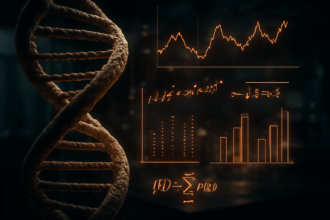In forensic science
 DNA, or Deoxyribonucleic Acid, is the genetic material found in cells, composed of a double helix structure. It serves as the genetic blueprint for all living organisms. Read Full Definition testing fails due to degraded evidence
DNA, or Deoxyribonucleic Acid, is the genetic material found in cells, composed of a double helix structure. It serves as the genetic blueprint for all living organisms. Read Full Definition testing fails due to degraded evidence
Understanding Mitochondrial Analysis
Mitochondria are specialized organelles found in human cells that are responsible for energy production and cell growth. Unlike nuclear DNA, which is inherited from both parents, mitochondrial DNA (mtDNA) is passed exclusively from the mother. This unique, matrilineal inheritance means that siblings share the same mtDNA, making it a valuable marker in forensic investigations.
The Forensic Value of Maternal DNA
Mitochondrial analysis is particularly useful in cases where conventional nuclear DNA testing is limited by degraded evidence. Since mitochondria exist in high numbers in cells, even compromised samples may yield a usable mtDNA profile. The analysis focuses on the control region of the mtDNA, providing insights into maternal lineage. However, because mtDNA is shared among related individuals, the results must be compared with reference samples to establish a meaningful match.
The Gilgo Beach Murders: A Case Overview
Rex Heuermann is a suspect in the Gilgo Beach murders—a series of unsolved killings that claimed the lives of 11 victims. Among those victims were three sex workers: Amber Costello, Melissa Barthelemy, and Megan Waterman. Key pieces of evidence included female hairs recovered from the victims’ remains. Unfortunately, due to prolonged environmental exposure, conventional DNA analysis could not be performed on these hairs, as the nuclear DNA was too degraded to generate a profile.
How Mitochondrial Analysis Advanced the Investigation
In 2022, forensic experts used mitochondrial analysis to extract a DNA profile from the recovered hairs. Although the technique could not pinpoint a specific individual on its own, it offered crucial clues about the samples’ shared maternal ancestry.
Key Steps in the Investigation:
- Extraction from Degraded Samples: The abundance of mitochondria allowed technicians to retrieve a usable DNA profile from hair samples that failed nuclear DNA testing.
- Establishing Maternal Links: By analyzing the control region, investigators identified similarities in the hairs’ mtDNA, suggesting a common maternal lineage.
- Corroborative Evidence: Investigators compared the mtDNA profiles with reference samples, including a profile obtained from a pizza crust in Manhattan and from the DNA of Rex Heuermann’s wife. These correlations provided crucial evidence linking Heuermann to the Gilgo Beach murders.
For more details on forensic breakthroughs, check our Forensic Insights page.
Advancements in Mitochondrial DNA Testing
Mitochondrial analysis has been used in forensic investigations since 1996. Recent advancements—particularly through Next-Generation Sequencing (NGS) technology—have dramatically increased the sensitivityIn the context of laboratory equipment or analytical techniques, the term "sensitive" describes the capability of a machine or method to detect even very small amounts or concentrations of a substance. Sensitivity is a quantitative Read Full Definition and accuracyIn scientific and measurement contexts, "accuracy" refers to the degree of proximity or closeness between a measured value and the true or actual value of the measured quantity. Accuracy indicates how well a measurement reflects Read Full Definition of mtDNA profiling. These technological improvements allow forensic scientists to work with smaller or more degraded samples, enhancing the reliability of evidence in cold cases like the Gilgo Beach murders.
The integration of advanced sequencing methods has cemented mitochondrial analysis as an indispensable tool for modern forensic science, capable of unlocking critical evidence that traditional methods might miss.
Conclusion: The Future of Forensic Breakthroughs
Mitochondrial analysis has proven itself as a powerful tool in forensic science, providing a breakthrough in cases where conventional DNA testing is insufficient. The Gilgo Beach murders case exemplifies how maternal DNA can be harnessed to overcome degraded evidence and establish links between a suspect and a crime scene. As forensic technology continues to advance, mitochondrial analysis will remain at the forefront of investigative techniques, offering new avenues for solving challenging cases.
By unlocking the secrets hidden in mitochondrial DNA, investigators can trace maternal lineages and strengthen the overall body of forensic evidence. This method plays a crucial role in linking suspects like Rex Heuermann to their crimes and paves the way for future advancements in criminal investigations.










